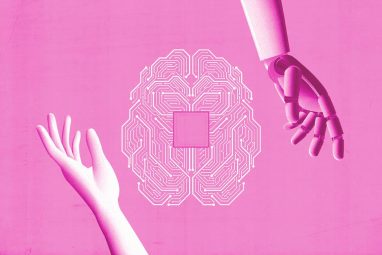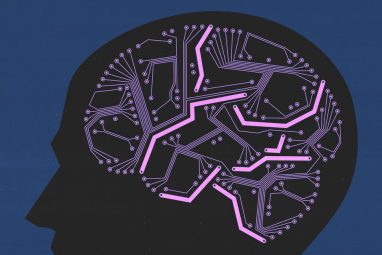How HUL is tapping AI to Rewire its Value Chain and Drive Growth
In a fast-moving retail landscape, HUL’s ambition is not just to keep pace but to lead the change, Meenakshi Burra, Chief Digital and Information Officer at Hindustan Unilever Limited (HUL), said in an email interaction with MIT Sloan Management Review India
Topics
News
- Google Bridges Cloud Power and Privacy with Private AI Compute
- California’s Genspark Enters AI Unicorn Club with $200 Million Round
- OpenAI Taps Intel’s Sachin Katti to Build Compute Backbone for AGI
- Flipkart Brings Voice-Led Wholesale Ordering to WhatsApp with Sarvam AI
- Varun Berry Steps Down at Britannia, Rakshit Hargave to Take Over
- OpenAI Issues Warning on AI’s Acceleration From Inside the Fast Lane

Hindustan Unilever Limited (HUL) is embedding artificial intelligence across every part of its business—from retail channels and marketing to manufacturing and supply chain—as part of its strategy to remain agile, consumer-centric, and future-ready in a rapidly transforming India.
“We operate at the heart of a nation that’s not just growing—it’s transforming,” said Meenakshi Burra, Chief Digital and Information Officer at HUL, in an interview with MIT Sloan Management Review India.
With over 800 million internet users and a booming digital ecosystem led by platforms like UPI and the Bharat Stack, Burra noted that Indian consumers, many of whom were once “media-dark,” are now spending more than three hours a day on social media. In this fast-moving environment, she said, HUL’s ambition is not just to keep pace but to lead the change.
That ambition is anchored in HUL’s digital transformation, built around a “powerful blend of data, technology, and AI enabling business-first outcomes at scale—to sell more, to save more, or to manage better.”
Burra pointed to digital commerce as one area where AI is already driving impact, particularly through automated campaign management, platform-specific content creation, and spend optimization—all of which have improved the company’s return on advertising spend while lowering costs.
At the same time, she said, most Indian consumers still buy from local retail stores, and HUL is investing heavily in empowering these retailers digitally.
Shikhar, HUL’s eB2B platform, currently serves 1.4 million retailers. Burra said the platform is now using generative AI to “democratize advertising” for small retailers, enabling them to create custom, celebrity-led promotional videos—a tactic once reserved for large retail chains. Shikhar also uses AI for shelf image analytics, personalized product recommendations, and a two-click smart basket ordering experience.
To meet the demands of faster fulfilment, HUL has launched ‘Samadhan,’ a next-day delivery solution for kirana stores. According to Burra, this system leverages AI and automation to orchestrate picking, packing, and last-mile delivery “at optimal speed and scale.”
HUL is also deploying AI to reshape consumer experience and drive premiumization in beauty. Virtual try-ons, skincare recommenders, and other AI-enabled tools have been rolled out across brands such as Lakmé, Pond’s, and TRESemmé, resulting in more than five million consumer trials. Burra said these tools have helped scale both consumer love and brand premium.
Campaign effectiveness is being further enhanced through Sangam, HUL’s AI-powered media optimization engine. By tapping into the company’s “data lake,” Sangam adjusts ad spending and deployment in real time to improve media efficiency. Burra added that AI is also helping HUL generate more than 6,000 brand assets every quarter, tailored for platform, format, and language, to match the needs of diverse consumer touchpoints.
On the operational side, Burra described how AI and digital solutions are being embedded across HUL’s supply chain.
“We are on a journey to create an intelligent, end-to-end integrated supply chain that prescribes actions based on real-time events and accurate disruption predictions,” she said.
Four of the company’s manufacturing sites have been recognized as Lighthouse Factories by the World Economic Forum for their advanced use of Industry 4.0 technologies, including AI.
One manufacturing cascade, she said, has now been converted to a fully automated “Lights Off” model, with no physical intervention required. AI is also being used in sourcing, where machine learning models predict availability and prices of raw materials to guide procurement decisions.
Burra noted that productivity gains are also being driven by more than ten “digital twins” now active across the company. These tools have saved over 45,000 employee hours by automating tasks such as report generation, transaction execution, and deck preparation. Even complex tasks like financial reporting or tracking procure-to-pay KPIs are now completed at the click of a button.
Underlying these efforts, she said, is a company-wide change management approach. Key enablers include a strong data foundation, a cross-functional digital council chaired by the CEO, and partnerships spanning Big Tech, niche AI firms, and the startup ecosystem.
“Digital and AI are no longer restricted to the technology organization nor is it an experiment,” Burra said. “It is the very way of working in HUL and we are committed to continue leveraging AI at scale to unlock business benefits.”




